First-time philodendron growers often commit one specific mistake – wrong soil choices.
Finding out the best soil for philodendrons and their humidity requirements is key to keeping them lush and healthy throughout their lifespan.
A smooth-sailing growing experience awaits every gardener for securing a soil mix that matches the needs of these heart-shaped-leafed plants.
Philodendrons can grow in a typical potting mix or garden soil, but they can perform better in soil mixes designed for their growth habit.
Garden soil often inhibits optimal respiration, space for root growth, and minimal water retention philodendrons need.
Poor soil conditions can keep philodendrons alive but leave them with slow growth, small leaves, and thin and short roots.
In worst cases, fungal growth can also be observed at the feet of the stem that touches the soil. To get the right soil mix formula, learn more about the qualities that philodendrons require in a potting mix.
4 Things Philodendrons Need in Potting Soil
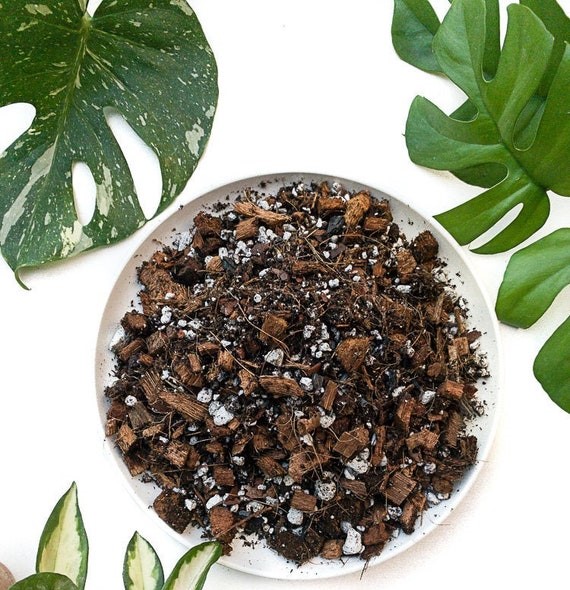
Philodendrons, sometimes known as heartleaf, are expensive low-maintenance plants that require a lot of space to grow and breathe.
Generally, the roots of plants have minimal oxygen to support plant growth but philodendrons need more air than your average plant.
Check out their specific soil requirements below:
1. Good Aeration
The best soil for philodendrons is well-aerated soil. It’s safe to say that they are the breather-type of plants that grow well in lightweight soil.
The soil amendments that help aerate the soil are vermiculite, perlite, pumice, orchid bark, or small stones.
For reference, their ideal soil consistency is similar to the aeration provided by soilless or orchid mixes.
2. Well-draining
Like money plants and other indoor plants, philodendrons don’t like wet feet. They need fast-draining soil that doesn’t retain too much water.
Garden soil to philodendrons is too compacted which increases their risk for fungal disease and root rot. The materials that aerate the soil are also the ones that promote better drainage for tropical plants.
Adding moisture-absorbent materials to the soil can also help get rid of excess water in the soil to prevent root rot.
Carbonized rice hull is a perfect addition to philodendron soil mix because it absorbs excess moisture, rich in nutrients, and is an organic matter that will become fertilizer once it decomposes.
3. Nutrient-rich
Nutrient-rich soil is always a must for every plant. Philodendrons are not fuzzy when it comes to soil nutrients.
The nutrients from worm castings, orchid barks, and compost are enough to sustain their needs for plant growth. They specifically appreciate a good amount of nitrogen, phosphorus, potassium, and magnesium.
4. Adequate Water Retention
Though aeration and drainage are crucial for philodendrons, they also need moisture in the soil.
The soil mix that you should choose should include water-retaining materials like peat moss or coco coir.
Two Options To Have The Best Soil For Philodendrons
Every gardener has two options during soil preparation. You can buy a pre-mixed peat-based potting soil or build your version of philodendron mix.
Using the soil qualities mentioned above as a guide, you can make your mix but in varying portions.
To help you choose which option is more cost-efficient and easier for you to use, we listed some ready-to-use potting mixes and DIY philodendron soil mix recipes that you can try:
A: Ready-To-Use Soil Mixes
Beginners and novice gardeners often go for ready-to-use soil mixes. However, unlike roses or other indoor plants, philodendron potting mixes are hard to find and sold in pouches that are also handcrafted by professional gardeners.
The main feature that you should look for in a potting mix is if it contains peat moss, perlite, or coco coir.
These types of potting mixes can be tweaked into something that will fit the preference of philodendrons. Check them out below:
1. RePot Me Philodendron Imperial Houseplant Potting Soil Mix
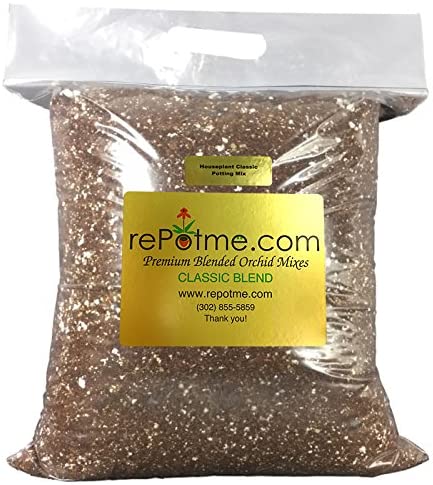
Re-Pot Me is one of the few brands that offer philodendron-specific potting mix in the market. The manufacturer claims it is specializing in handcrafted free-draining potting soil for indoor plants.
The Imperial Houseplant Blend contains:
- Coco coir: The main medium for the potting mix that came from Sri Lanka. It is cleaned thoroughly and derived from coconut husk.
- Perlite: Small spongy rocks are added to the potting mix to help break up the mix and improve soil drainage.
- Small Monterey pine barks: The barks release nutrients into the potting mix and help make it more aerated.
- Charcoal: The material used to absorb impurities in the potting mix and improve both soil aeration and drainage.
- Fine vermiculite: This material helps coco coir ensure that Philodendrons get an adequate amount of water in every watering.
The materials used for the potting mix are designed to provide optimal water, aeration, and nutrients for philodendrons.
Potting soil infested with fungus gnats is a common problem with most potting soil brands in the market due to peat moss. RepotMe made sure that products avoid such problems by using coco coir.
Aside from philodendron, Imperial Blend is also ideal for:
- Monstera.
- Pothos.
- Snake plant.
- Peace Lily.
RepotMe Imperial Blend is a life-saver for beginner gardeners. It has all the materials needed in growing healthy philodendrons. Plus, it has durable and resealable packaging.
Pros:
- Fungus gnat-free.
- Ideal water retention for indoor plants.
- Philodendron-specific soil mix.
Cons:
- Pricey.
- Some gardeners notice that the product is smaller than it appears online.
2. Noot Organic Indoor Plant Soilless Potting Mix
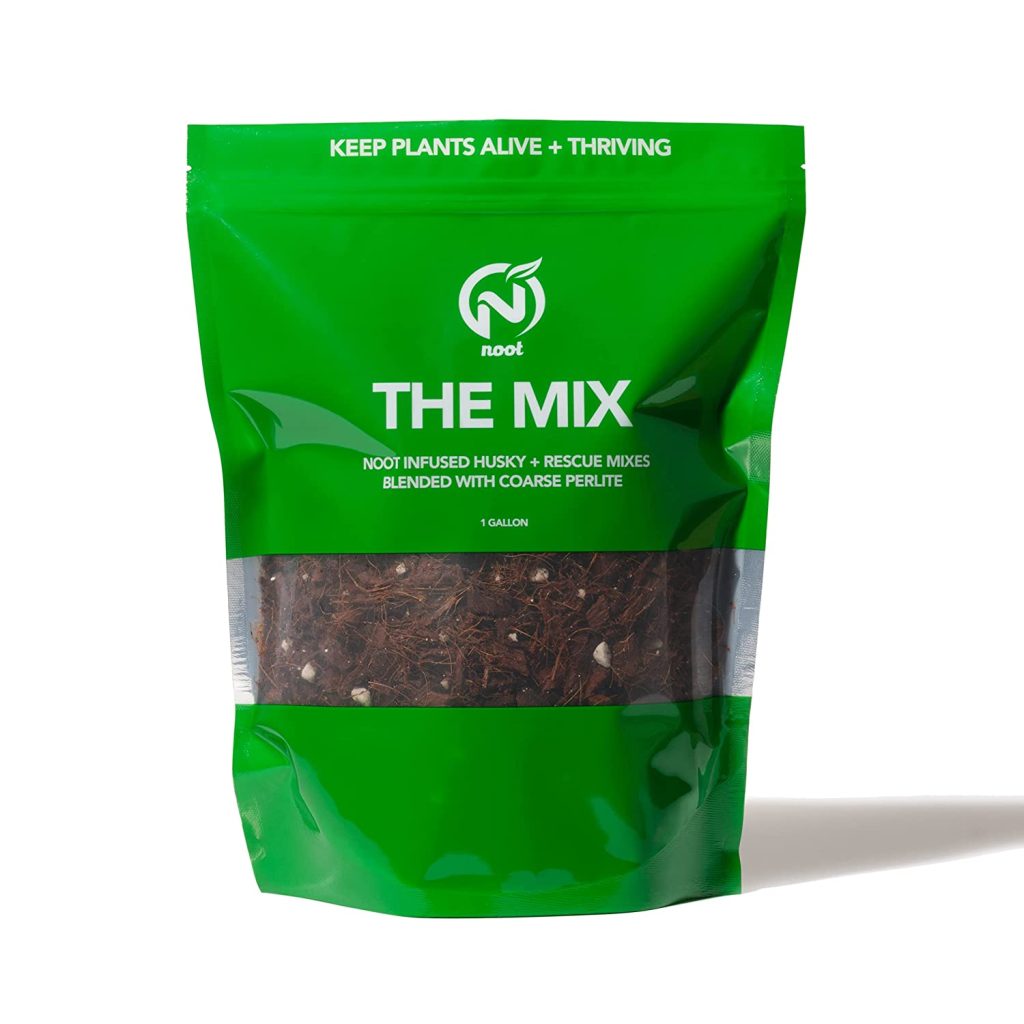
Soilless potting mix is another candidate for the best soil for philodendron. The closest option that you can use is Noot Organic Soilless Potting Mix.
Aside from having a chunky soil consistency, it contains a minimal amount of plant food to jumpstart the growth of philodendrons.
This potting mix contains:
- Coconut husk.
- Bark chips.
- Coco coir.
- Coarse perlite.
- Noot bio-organic plant food (0.10-0.15-0.12) – Pre-soaked.
More than the soil amendments added to the mix, the manufacturer also added some beneficial bacteria to support rapid root growth. The combination of materials also supports the need for philodendrons for optimal soil aeration and drainage.
Aside from philodendrons, you can also use them for the following:
- Tropical plants.
- Fiddle leaf fig.
- Ficus.
- Peace lily.
- Succulents.
- Ferns.
- Palms.
- Cacti.
- Bonsai.
- Calathea.
- Orchids.
- Anthuriums.
- Monstera.
- Aroids.
- Basil, thyme, and other kitchen herbs.
Each pack of Noot contains a gallon of soulless mix. The packaging is resealable and the content contains 100% organic materials.
The only problem that you may notice is its smell. To remove the smell, the manufacturer recommends that you should expose the whole pack outdoors and keep the packaging open for 24 hours.
Pros:
- Bug-free potting mix.
- Retains enough water for picky plants while keeping the medium aerated.
- Helps revive sickly philodendrons planted in compacted soil.
Cons:
- Pricey.
- Gets smelly when stored for a long time.
3. Espoma Organic Orchid Mix Potting Soil
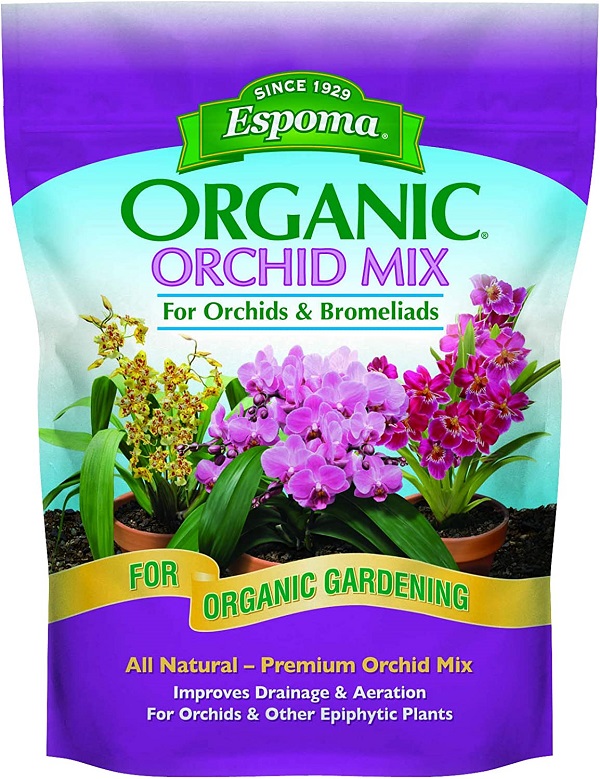
This orchid mix is the best medium for plants that needs a lot of aeration like philodendrons.
Espoma Organic Orchid is made of organic materials that you can mix with other water-retaining materials to adjust its consistency for philodendrons.
It is enhanced with myco-tone that contains mycorrhizae that help speed up the breakdown of organic matter in the soil for faster absorption of nutrients.
This potting mix is mainly bark and perlite. You can add a few cups of coco peat or sphagnum peat moss and charcoal to provide all the needs of philodendrons.
It doesn’t contain any synthetic materials and can help you speed up building a philodendron potting soil.
Pros:
- Ready to use.
- Organic materials.
- Affordable.
- Enriched with myco-tone.
Cons:
- Incomplete mix – needs peat moss and charcoal to achieve balanced water drainage and retention.
4. Foxfarm Ocean Forest Potting Soil

Ocean Forest Potting Soil is another surprising option for gardeners. It is not designed for philodendrons but it possesses the ideal materials for ariums.
Foxfarm uses unique ways to nourish plants by utilizing a blend of natural land and sea materials. This potting mix is derived from:
- Sphagnum peat moss.
- Earthworm castings.
- Bat guano.
- Fish emulsion.
- Crab meal.
- Sandy loam.
Enhance this light potting soil with perlite or small pumice to improve water drainage and aeration and voila! It becomes a perfect philodendron potting mix.
Due to its nutrient-dense contents, you no longer need to add fertilizer for the few weeks after transplanting. Other than ariums, you can also use it for:
- Annuals and perennials.
- Bedding plants.
- Houseplants.
- Indoor/outdoor containers.
- Vegetables and herbs.
- Raised beds.
FoxFarm’s Ocean Forest offers a unique blend of nutrients that you will rarely find in other potting mixes. Bat guano is bat and seabird manure which is a good source of nitrogen, potassium, and phosphate. Its nutrient ratio is:
- Nitrogen: 0.3%.
- Phosphate: 0.45%.
- Potassium: 0.05%.
- Calcium: 1%.
The price point of Ocean Forest often discourages gardeners but its unique set of ingredients makes it worth trying.
Pros:
- Workable soil for philodendrons.
- Worth the price
- Nutrient-rich soil mix.
- Initial nutrient support included transplanted philodendrons.
- Has an earthy smell.
Cons:
- Pricey.
- Some batches smell moldy.
DIY Philodendron Soil Recipes
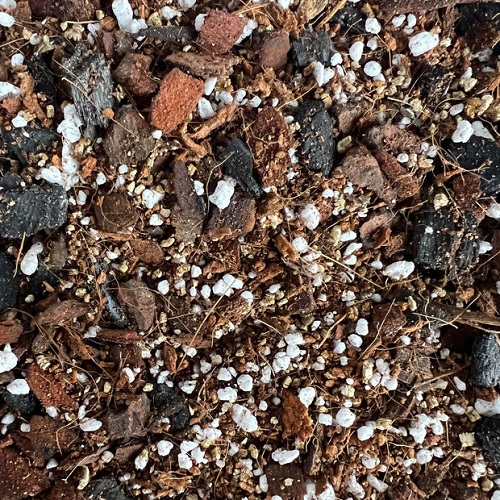
Well-versed gardeners love to take on the challenge of building the best soil for philodendrons.
Some find it more cost-efficient to prepare the soil themselves because it is more cost-efficient. They can also adjust the materials used based on the needs of their philodendrons.
For DIY lovers, we listed some recipes that work for most philodendron growers. Later on, you will notice that they have different strategies for building up the soil structure. However, they are all based on the crucial needs of philodendrons in soil.
The measurement guide is in percentage. To make measuring easier, 100% corresponds to 10 cups. So, a 20% perlite means 2 cups of perlite will be added to the mix.
Before you browse the potting mix ingredients, here are the main resources you’ll need:
- Sphagnum peat moss.
- Vermiculite.
- Coco coir.
- Perlite.
- Orchid bark.
- Worm castings.
- Activated charcoal.
- Pumice.
Recipe #1: 100% Sphagnum Peat Moss
Sphagnum peat moss is an acidic medium that can be enough to grow philodendrons. It is often used as a potting medium for propagating cuttings.
If you notice that it retains so much water, you can add in a few cups of perlite to boost drainage.
Recipe #2: Orchid bark + Coconut Coir + Perlite + Worm Castings + Activated Charcoal
If you want your philodendrons to receive the best growing medium, here is the complete package for a philodendron potting mix:
(1) Orchid bark 25%: Bark chips can be an optional addition to the potting mix but it helps add nutrients and aeration to the soil. Due to its rough and chunky nature, it also improves soil drainage.
(2) Coconut coir 25%: With equal amounts as bark chips, coconut coir will serve as one of the main structures of the potting mix. It absorbs water and retains an adequate amount for the consumption of the roots.
If you often experience having fungus gnats in your garden, coconut coir is a better alternative to sphagnum peat moss.
(3) Perlite 25%: Philodendrons hate compacted soil. Adding perlites can help loosen up the soil and improve both soil aeration and drainage of the soil. In the absence of perlite, you can also use small stones.
(4) Worm castings 10%: Worm castings are worm poop that is rich in nutrients. It will serve as the nutrient source for the potting mix other than the bark chips.
(5) Activated charcoal 5%: Activated charcoal is also an optional addition to your potting mix. It helps remove impurities in the potting mix and absorb excess water.
Recipe #3: Peat Moss + Vermiculite + Potting Soil
If you are looking for a simpler mix to try, this recipe can suffice for growing philodendrons:
(1) Peat moss 30%: If you have no issues with fungus gnats, peat moss is an excellent addition to the potting mix. It works like coco coir but has better features like nutrient retention and neutralizing the soil acidity.
Since this recipe contains fewer soil amendments, the percentage is higher than the other ones. Peat moss should have the least quantity. Otherwise, it will cause the potting mix to be soggy and cause root rot.
(2) Vermiculite 40%: Vermiculite is an alternative to perlite that helps to aerate soil but retains water and nutrients. You may reduce its contents if you notice that the soil holds too much moisture than it should.
(3) Potting soil 30%: Pure garden soil may not be the most ideal option for potting philodendrons but they are enough to keep the plants alive.
Together with other soil amendments, you can still achieve the optimal aeration, drainage, and nutrient requirements of philodendrons.
Recipe #4: Pumice + Coco Peat + Dried Tree Barks + Vermicast + Carbonized Rice Hull
Soil adjustments are sometimes based on the climate where the plants grow. Philodendrons grown in tropical and hot regions need a diverse set of soil amendments to achieve optimal growth.
Here’s the best soil for philodendrons grown in the tropics:
(1) Coco coir 25%: Coco coir is an essential component in the potting mix because it keeps the soil moist and not soaked.
(2) Bark chips 25%: Bark chips are in charge of soil aeration and excess water absorption in the soil. It is also a good source of nutrients as it degrades over time. You may use Coco cubes if you don’t have any bark chips available.
(3) Pumice 25%: Small pumice stones help add space to the soil that prevents compaction.
Consequently, it provides good aeration and drainage. It can also absorb excess moisture in the pot which can help prevent root rot and fungal growth. In the absence of pumice, you may also use small pebbles.
(4) Carbonized rice hull 15%: Rice hull is not a popular soil amendment in the US. It is commonly used in Asian countries as a soil conditioner and fertilizer in a potting mix.
It’s rich in phosphorus, magnesium, potassium, and calcium. It also helps maintain the soil pH balance between pH levels 5 and 6.
(5) Worm castings 15%: Worm castings contain beneficial soil microbes and nutrients readily available to support plant growth and root development. It is undeniably one of the best components of the best soil for philodendrons.
Tips in Potting Philodendrons
The quality and size of the pots and soil amendments used for philodendrons are equally important to root development and overall plant growth.
Here are a few tips that you should keep in mind when potting or transplanting philodendrons:
(1) Base the size of the pot on the size of the roots. Planting a young philodendron in a large pot has a higher risk of dying or being nutrient-deficient due to root rot.
Short roots will not be able to absorb all the moisture in excessive soil in a large pot, causing them to sit in water for long periods.
(2) Always check the soil pH level of a potting mix before transplanting philodendrons.
If the soil is too acidic or too alkaline, the roots will not be able to absorb nutrients in the soil which can cause yellowing of leaves and overall plant decline.
(3) There are many alternatives to perlite in boosting soil drainage. Pumice is a more affordable option but works just as well as perlite.
(4) Check the packaging of ready-to-use potting soil if it already contains added fertilizers to avoid overfertilization issues.
Philodendrons In-Depth
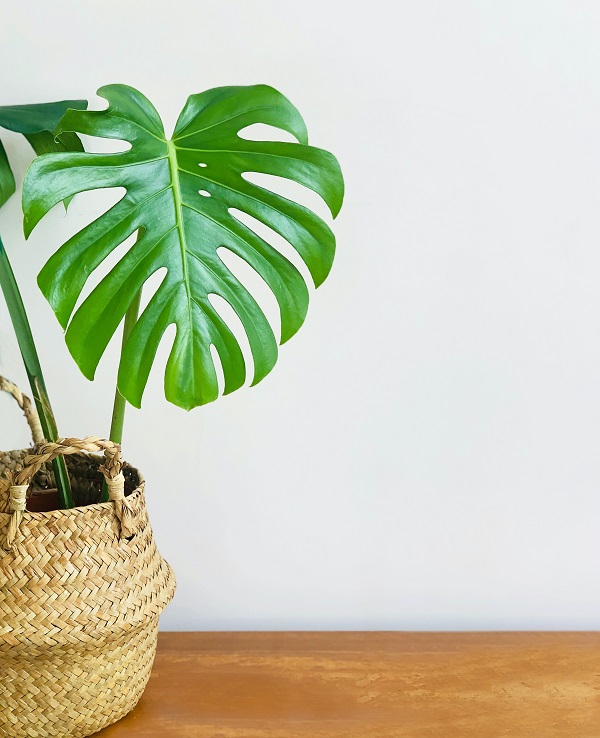
At a glance, the philodendron is a visual reminder of the tropics just like palm trees. Its heart-shaped leaves captivated the hearts of so many green thumbs.
The term philodendron comes from the Greek word Philos and dendron, which means loving tree.
There are two types of philodendron: trailing and non-trailing. Both types are easy to grow and adapt easily in indoor and outdoor settings. Most varieties of philodendron are not finicky when it comes to humidity and sunlight.
Philodendron is always favored to be used in living spaces along with fiddle leaf fig trees. Their deep green foliage and vigorous growth add life to any concern and helps improve indoor air quality.
These heart-shaped plants thrive in temperatures 65°F and above. They can stay in the dark areas of your house, like hallways and stairs.
The only time you need to tend to these low-maintenance is during transplanting, watering, and fertilization. Other than that, you can leave them alone to grow and expand into healthy indoor plants.
Frequently Asked Questions (FAQs)
Is potting mix good for philodendrons?
Yes, but you have to add a few ingredients to the mix to make it more ideal for philodendrons.
Some potting also contains soil amendments that cause soil compaction and excessive moisture absorption. Check out the ready-to-use potting mixes above for your reference.
Can I use cactus soil for philodendron?
Cactus soil contains very light materials that will not be enough to support the needs of philodendrons. The most ideal potting mix for philodendrons is perlite or peat-based mixes like orchid mixes.
Do philodendrons like succulent soil?
Succulent soil doesn’t have the moisture retention and nutrient density that philodendrons need. They may have an aerated and well-draining structure, philodendrons love a moist soil environment and need a lot of nutrients to maintain their heart-shaped leaves.
Key Takeaways
We hope that this post helped you discover the best soil for philodendrons and how to make them at home.
We highly encourage our fellow gardeners to consider making their potting mix rather than buying expensive ready-made ones. More than the savings that you can earn, mixing and matching soil amendments equips you with skills that you can apply in growing other plants.
Do you have a secret potting mix recipe that grows philodendrons like magic?
It’s time to share your expertise in the comments below. Also, if you find this post helpful, send it to your friends and collect different kinds of philodendrons in your house.
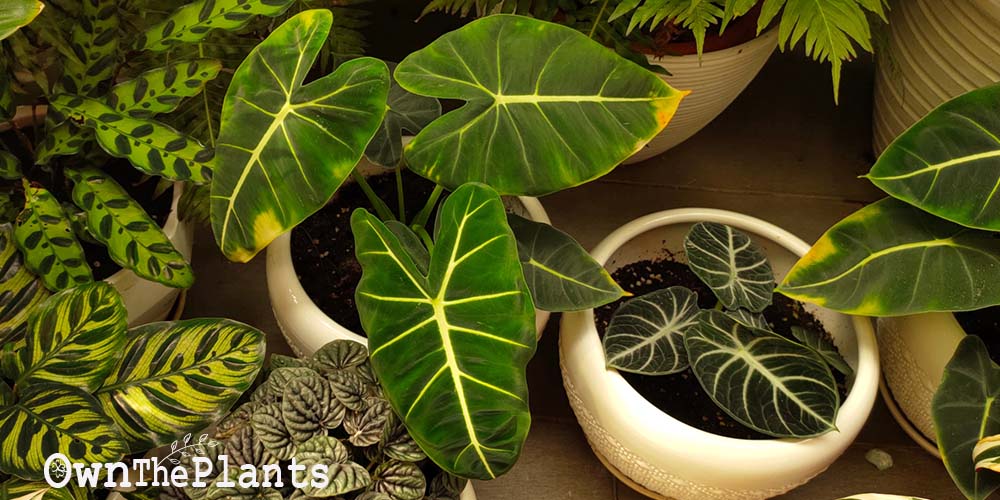
4 thoughts on “Lush Tropicals: What Is The Best Soil For Philodendron?”